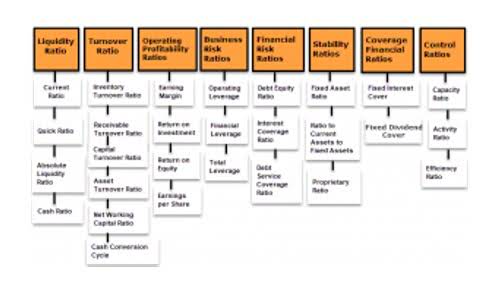
Changes in working capital reflect the fluctuations in a company’s short-term assets and liabilities over a specific period. Boiled down to its essence, net working capital is a financial ratio describing the difference between an organization’s current assets and current liabilities. It appears on the balance sheet and is used to measure short-term liquidity, or a company’s ability to meet its existing short-term obligations while also covering business operations.
Formula In Excel (with excel template)

Technically, it might have more current assets than current liabilities, but it can’t pay its creditors off in inventory, so it doesn’t matter. Conversely, a negative WC might not mean the company is in poor shape if it has access to large amounts of financing to meet short-term obligations such as a line of credit. Typical current assets that are included in the net working capital calculation are cash, accounts receivable, inventory, and short-term investments.

Tips to Increase Working Capital
Net working capital is a crucial financial metric for businesses, providing insights into a company’s short-term financial health and operational efficiency. It reflects the difference between a company’s current assets and current liabilities. A positive change in net working capital indicates improved liquidity, potentially signifying a company’s increased ability to cover short-term obligations, invest in its operations, or grow its business. Conversely, a negative change can signal potential liquidity issues or financial instability. Working capital, often referred to as the lifeblood of a business, represents the funds available for day-to-day operations. It encompasses current assets such as cash, inventory, and accounts receivable, minus current liabilities like accounts payable and short-term debt.
Net Working Capital Calculation Example (NWC)

Different companies may have different level of liquidity requirements, depending on the type of industry, business model, products and services manufactured etc. Any change in working capital can affect cash flow, which is the net amount of cash and cash equivalents being transferred in and out of a company. If the change in working capital is positive, then you have more assets than liabilities. Credit policy adjustments often lead to changes in how quickly cash comes in. A tighter, stricter policy reduces accounts receivable and, in turn, frees up cash.

A business has negative working capital when it currently has more liabilities than assets. This can be a temporary situation, such as https://x.com/BooksTimeInc when a company makes a large payment to a vendor. However, if working capital stays negative for an extended period, it can indicate that the company is struggling to make ends meet and may need to borrow money or take out a working capital loan.
- Change in net working capital refers to the differences in the liquidity of the company.
- Some companies have negative working capital, and some have positive, as we have seen in the above two examples of Microsoft and Walmart.
- What is a more telling indicator of a company’s short-term liquidity is an increasing or decreasing trend in their net WC.
- This efficiency helps a business maximize its profitability, as it is well-prepared to handle unexpected expenses or invest in income-generating opportunities without relying heavily on external financing.
- You just have to subtract the previous year’s working capital from the current year’s working capital which we have just calculated in the bellow table.
- By calculating the change in working capital, you can better understand your company’s capital cycle and strategize ways to reduce it, either by collecting receivables sooner or, possibly, by delaying accounts payable.
- As the company grows, it may need to invest more in its working capital to support increased production or inventory levels, resulting in a higher net working capital requirement.
Company
- Lenders will often look at changes in working capital when assessing a company’s management style and operational efficiency.
- It shows how efficiently a company manages its current resources, such as cash, inventory, and accounts payable.
- Current assets are short-term assets that can easily be converted into cash within a one-year time duration.
- Since the company is holding off on issuing payments, the increase in payables and accrued expenses tends to be perceived positively.
Here, by summing up all the current assets, we get the total current assets for the years and 2019 are $61,806 million and $61,897 million respectively. If the Net Working capital increases, we can conclude that the company’s liquidity is increasing. It could indicate that the company can utilize its existing resources better. Some companies have negative working capital, and some have positive, as we have seen in the above two examples of Microsoft and Walmart. Generally, companies like Walmart, which have to maintain a large inventory, have https://www.bookstime.com/ negative working capital.

On the other side, Changes in Net Working Capital determine the true value or position of the business on the working capital cycle- where the company stands right now. Let us understand the formula that shall act as a basis for us to understand the intricacies of the concept and its related factors. We’ll now move on to a modeling exercise, which you can access by filling out the form below.
- Current liabilities include accounts payable, short-term debt (and the current portion of long-term debt), dividends payable, current deferred revenue liability, and income tax owed within the next year.
- Using hedging strategies to offset swings in cash flow can mitigate unexpected changes in working capital.
- A negative net working capital, on the other hand, shows creditors and investors that the operations of the business aren’t producing enough to support the business’ current debts.
- Negative NWC suggests potential liquidity issues, requiring more external financing.
- Examples of changes in net working capital include scenarios where a company’s operating assets grow faster than its operating liabilities, leading to a positive change in net working capital.
- It shows the difference between what a business owns (like cash, goods, and money others owe them) and what it owes to others.
- However, the net amount is calculated by deducting the current liabilities form the assets, which gives a clear idea about the funds available.
Changes in net working capital can how to calculate change in nwc have significant implications for a company’s financial health. For example, if a company experiences a positive change, it may have more funds to invest in growth opportunities, repay debt, or distribute to shareholders. Conversely, a negative change may signal that a company struggles to meet its short-term obligations. Understanding how to calculate and interpret net working capital is fundamental for effective financial management and decision-making within a business. Net Working Capital (NWC) measures a company’s liquidity by comparing its operating current assets to its operating current liabilities. A positive calculation shows creditors and investors that the company is able to generate enough from operations to pay for its current obligations with current assets.
